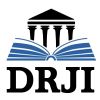Evaluation of the risk management performance
Abstract
Full Text:
PDFReferences
Mitchell, T An operational framework for mainstreaming disaster risk reduction, Benfield Hazard Research Centre Disaster Studies Working Paper 8, 2003.
ISDR, A framework to guide and monitor disaster risk reduction, www.unisdr.org/dialogue/ basicdocument.htm draft proposal, ISDR/ UNDP, 2003.
Cardona, O.D., Hurtado, J. E., Duque, G., Moreno, A., Chardon, A.C., Velásquez, L. S. and Prieto, S. D., The Notion of Disaster Risk. Conceptual Framework for Integrated Risk Management. IDB/IDEA Program on Indicators for Disaster Risk Management, Universidad Nacional de Colombia, Manizales. http://idea.unalmzl.edu.co. 2003a.
Cardona, O.D., Hurtado, J. E., Duque, G., Moreno, A., Chardon, A.C., Velásquez, L. S. and Prieto, S. D., Indicators for Risk Measurement: Fundamentals for a Methodological Approach. IDB/IDEA Program on Indicators for Disaster Risk Management, Universidad Nacional de Colombia, Manizales. http://idea.unalmzl.edu.co. 2003b.
Benson, C., Potential approaches to the development of indicators for measuring risk from a macroeconomic perspective, IDB/IDEA Program on Indicators for Disaster Risk Management, http://idea.unalmzl.edu.co Universidad Nacional de Colombia, Manizales. 2003.
Briguglio, L., Some Considerations with regard to the construction of an index of disaster risk with special reference to Islands and Small States, IDB/IDEA Program on Indicators for Disaster Risk Management, http://idea.unalmzl.edu.co Universidad Nacional de Colombia, Manizales. 2003a. ISSN 1582-3024 Article no.4, Intersections/Intersecţii, Vol.2, 2005, No.2, “Structural Engineering†97
Briguglio, L., Methodological and practical considerations for constructing socio-economic indicators to evaluate disaster risk, IDB/IDEA Program on Indicators for Disaster Risk Management, http://idea.unalmzl.edu.co Universidad Nacional de Colombia, Manizales. 2003b.
Davis, I., The Effectiveness of Current Tools for the Identification, Measurement, Analysis and Synthesis of Vulnerability and Disaster Risk, IDB/IDEA Program on Indicators for Disaster Risk Management, Universidad Nacional de Colombia, Manizales. 2003.
Masure, P., Variables and indicators of vulnerability and disaster risk for land-use and urban or territorial planning, IDB/IDEA http://idea.unalmzl.edu.co, Universidad Nacional de Colombia, Manizales. 2003 http://idea.unalmzl.edu.co,
Munda, G., Methodological Exploration for the Formulation of a Socio-Economic Indicators Model to Evaluate Disaster Risk Management at the National and Sub-National Levels. A Social Multi-Criterion Model, IDB/IDEA Program on Indicators for Disaster Risk Management, Universidad Nacional de Colombia, Manizales. http://idea.unalmzl.edu.co. 2003.
Carreño, M.L, Cardona, O.D., Barbat, A. H., MetodologÃa para la evaluación del desempeño de la gestión del riesgo, MonografÃas CIMNE, Technical University of Catalonia, Barcelona, Spain, 2004.
Cardona, O.D. Estimación HolÃstica del Riesgo SÃsmico utilizando Sistemas Dinámicos Complejos Technical University of Catalonia, http://www.desenredando.org/public/varios/ 2001/ehrisusd/index.html Barcelona. 2001
Carreño-Tibaduiza, M.L Sistema Experto para la Evaluación del Daño PostsÃsmico en Edificios, Thesis of Master, Department of Civil Engineering and Environment, University of Los Andes, Bogota. 2001.
Comfort, L.K. Shared Risk: Complex Systems in Seismic Response, Pergamon, New York. 1999.
Carreño, M.L, Cardona, O.D., Barbat, A. H., Sistema de indicadores para la evaluación de riesgos, MonografÃas CIMNE, Technical University of Catalonia, Barcelona, Spain, 2005.
Cardona, O. D., Hurtado, J. E., Duque, G., Moreno, A., Chardon, A.C., Velásquez, L. S. and Prieto, S. D., Disaster Risk and Risk Management Benchmarking: A Methodology Based on Indicators at National Level, IDB/IDEA Program on Indicators for Disaster Risk Management, http://idea.unalmzl.edu.co, Universidad Nacional de Colombia, Manizales. 2004.
Cardona, O. D., Hurtado, J. E., Duque, G., Moreno, A., Chardon, A.C., Velásquez, L. S. and Prieto, S. D., System of Indicators for Disaster Risk Management: Program for Latin America and the Caribbean: Main Technical Report, IDB/IDEA Program on Indicators for Disaster Risk Management, http://idea.unalmzl.edu.co Universidad Nacional de Colombia, Manizales. 2005.
Saaty, T. L. The Analytic Hierarchy Process, McGraw-Hill Book Co., N.Y. 1980.
Saaty, T.L. The analytic hierarchy process- what it is and how it is used. Mathematical Modelling, 9, 161-176., 1987.
Saaty, T.L., Vargas, L.G. Prediction, Projection, and Forecasting: Applications of the Analytical Hierarchy Process in Economics, Finance, Politics, Games, and Sports. Boston: Kluwer Academic Publishers, 1991.
Refbacks
- There are currently no refbacks.
Copyright (c) 2015 INTERSECTII / INTERSECTIONS
Indexed

